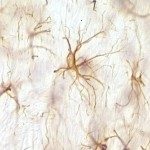Link to Pubmed [PMID] – 10736105
Scand. J. Immunol. 2000 Apr;51(4):337-44
Combinatorial phage display technology offers a new possibility for making human antibodies which could be used in immune therapy. We explored the use of this technology to make human scFvs specific for crotoxin, the main toxic component of the venom of the South-American rattlesnake Crotalus durissus terrificus. Crotoxin, a phospholipase A2 neurotoxin constituted by the association of two subunits, exerts its lethal action by blocking neuromuscular transmission. This is the first report of human anticrotoxin scFvs (scFv 1, scFv 6 and scFv 8) isolated from a naive library of more than 1010 scFv clones with in vivo neutralizing activity. Nevertheless, differences are observed at the level of biological and immunological effects. Only scFv 8 is able to reduce the myotoxicity induced by crotoxin and scFv 1 is capable of altering the in vitro enzymatic activity of this toxin. All three scFvs recognize a region of one subunit located at the junction with the other one. Moreover these scFvs share strong amino acid homologies at the level of either the heavy or the light chain. Taken together, our results suggest that the use of human anticrotoxin scFvs may lead to a new and less aggressive passive immune therapy against poisoning by the venom of Crotalus durissus terrificus.

